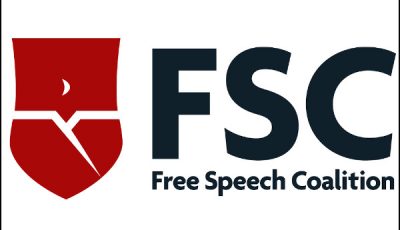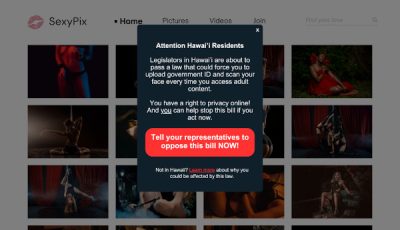DOJ Urges Court to Reject FSC’s Proposed Order in 2257 Case
 PHILADELPHIA – Back in May, when U.S. District Judge Michael Baylson issued his opinion in Free Speech Coalition v. Sessions, he observed the court had “purposely not attempted to finalize the exact parameters of this relief, in specific language” in his decision.
PHILADELPHIA – Back in May, when U.S. District Judge Michael Baylson issued his opinion in Free Speech Coalition v. Sessions, he observed the court had “purposely not attempted to finalize the exact parameters of this relief, in specific language” in his decision.
Instead, Baylson ordered the parties to try to fashion an agreement upon proposed language for the court’s final order in the case.
“Even if the parties cannot agree totally on all issues, the Court requests that they attempt to agree on the language the Court should use in its final judgment,” Baylson wrote in his May order. “If the parties cannot agree, then the Court will require each party to submit their own draft and the Court will make a final decision on the final decree.”
As it turns out, to say the parties “cannot agree” on the proposed language is something of an understatement.
In its notice of filing a separate proposed judgment submitted late last week, the U.S. Department of Justice repeatedly asserts the FSC’s proposed language goes much further than the court’s reasoning – and asks the court to set aside a great deal of the FSC’s verbiage in favor of a far narrower decree.
“In contrast to Defendant’s proposed judgment, Plaintiffs’ version would provide broad declaratory and injunctive relief that is not limited to the individual plaintiffs,” the DOJ wrote in its notice. “However, Plaintiffs’ proposed relief is overbroad and contrary to established Third Circuit law.”
The notion that the FSC’s proposed order goes too far is a theme to which the DOJ returned many times in its notice – and in very similar terms, as its argument in each instance is that the proposed judgment offered by the FSC “is inconsistent with Third Circuit authority.”
“Plaintiffs’ version would extend declaratory and injunctive relief to all secondary producers rather than only to the individual plaintiffs,” the DOJ asserted in another section of the notice. “Plaintiffs’ version goes beyond the appropriate relief for the individual plaintiffs’ as-applied claims and is inconsistent with Third Circuit authority as explained above.”
One of the clearest examples of how far apart the two parties are on the language of the proposed order comes in connection with 2257’s labeling requirement. In the FSC’s proposed order, in part it would have the court sign on off on the following language:
“The Court declares that 18 U.S.C. §§ 2257 (e)(1), (e)(2); 2257A (e)(1), (e)(2), and the regulations implementing them, 28 C.F.R. §§ 75.6, 75.8, the labeling requirement, as currently promulgated, are unconstitutional under the First Amendment to the United States Constitution, as applied, and hereby permanently enjoins Defendant, his agents, servants, employees, attorneys, and other persons acting in concert or participation with him from enforcing those statutes and regulations, until Defendant promulgates a new simple, straightforward regulation requiring primary producers of visual depictions of actual and simulated sexually explicit conduct to affix a label to such visual depictions stating that all persons appearing in those depictions are 18 years of age or older, which the Court finds would be narrowly tailored as applied.”
As the DOJ sees it, however, the FSC’s proposed language misapprehends what the court held in its May ruling.
“Plaintiffs’ version declares the Statutes’ labeling requirements invalid even though the Court upheld those requirements as ‘narrowly tailored as applied to [the individual] Plaintiffs,’” the DOJ wrote. “Their proposal therefore does not accurately set forth the Court’s decision, which indicated that only the regulatory labeling requirements were invalid as applied to the individual plaintiffs.”
In another section of its notice, the DOJ also suggests the court itself may have overstepped in suggesting it could accept suggestions on new language for the labeling requirement, arguing that such a change ought to pass through the appropriate regulatory procedures and protocols.
“In holding the labeling regulations invalid as applied to the individual plaintiffs, the Court called for new regulations that would ‘be simple and straight forward,’” the DOJ wrote. “The Court also directed counsel ‘to submit the proposed regulations, or an agreed upon outline of them, as part of the proposed final decree.’ Defendant respectfully requests that this aspect of the Court’s decision not be incorporated into a final judgment because the Administrative Procedure Act… does not allow for an agency to submit proposed regulations to the Court, or for the Court to require submission of proposed regulations.”
The DOJ added in its notice that “if the Department decides to promulgate new regulations, it will likely do so by following notice and comment rulemaking procedures set forth in the APA.”
“Because judicial review under the APA is limited to final agency action, it would be inappropriate for the Court to review proposed regulations,” the DOJ added in its filing. “It would also be inappropriate for the Court to retain jurisdiction over this case while the Department considers how to proceed and goes through any rulemaking process. Rather, the Court’s judgment should simply set forth the Court’s decision regarding the labeling regulations, holding that the labeling regulations may not validly be applied to the individual plaintiffs, and allow the Department to take further action consistent with the Court’s opinion.”
It remains to be seen what Judge Baylson will make of the FSC and DOJ’s competing filings, or whether he will adopt the DOJ’s position on the propriety of the court reviewing proposed regulations.
In reading its filings in this phase of the case, one thing does seem clear: The DOJ doesn’t consider 2257 to be invalidated or unenforceable, particularly with respect to entities which aren’t parties in this case.













